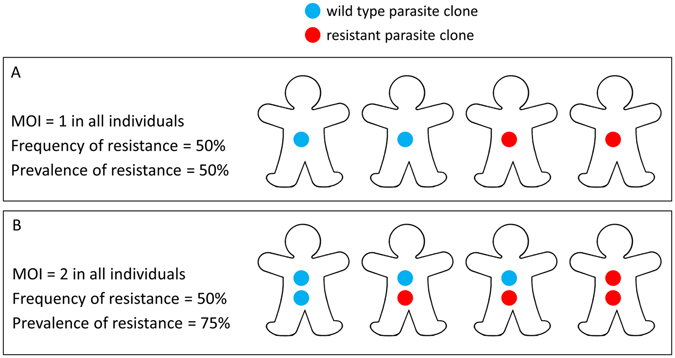Figure 1.

The difference between the prevalence of resistance in the infected human population (% of individuals carrying at least one resistant parasite clone) and the frequency of resistance in the parasite population (% of parasite clones which are resistant). If each individual carries only one parasite clone (a multiplicity of infection (MOI) of 1) (A), then the frequency and prevalence of resistance are the same. However in most areas, particularly areas with high malaria transmission intensity, individuals carry multiple parasite clones, so that the frequency and prevalence of resistance are often not the same. For example, if everyone in an area carries 2 parasite clones (B), and the frequency of resistance in the parasite population is 50%, then the prevalence of resistance in humans would be 75% if clones are distributed randomly. The prevalence of resistance in humans is almost always higher than the frequency of resistance in the parasite population due to multi-clonal infections. In reality, individuals in a malaria-endemic area carry different numbers of parasite clones (which we allow for in the analyses presented in the Methods and Results sections).
